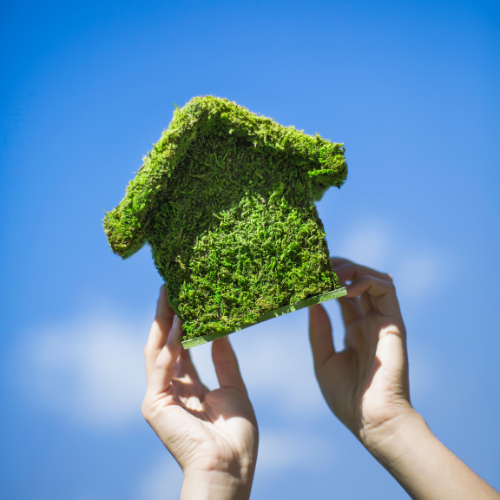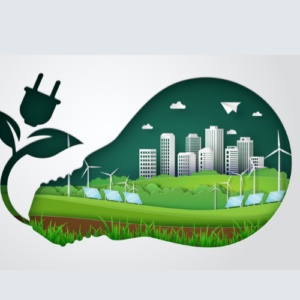
30 Jul Green Building Pest Solutions
Environmentally Responsible Pest Control
Green building practices are becoming increasingly important as we strive to create more sustainable and eco-friendly environments. Pest control is a critical component of these practices, ensuring that buildings remain healthy and free from unwanted intruders. This article aims to educate South Florida residents, homeowners, and business owners on how to integrate pest control with green building practices effectively.
Green building practices focus on creating structures that are environmentally responsible and resource-efficient throughout their lifecycle. This includes everything from the site selection and design to construction, operation, maintenance, renovation, and demolition. The main goal is to reduce the overall impact on human health and the environment.
These practices encompass several key components, including energy efficiency, water conservation, the use of sustainable materials, and indoor environmental quality. By incorporating these elements, green buildings can provide significant environmental, economic, and health benefits. They help reduce greenhouse gas emissions, lower energy and water costs, and create healthier indoor environments for occupants.
Non-Toxic Pest Control Methods
Traditional pest control methods often involve the use of chemicals that can harm the environment and human health. Eco-friendly pest control focuses on reducing these impacts by using organic and non-toxic solutions. These methods are not only safer for people and pets but also support the overall sustainability goals of green building practices.
Eco-friendly pest control methods can effectively manage pests without compromising the health of the building’s occupants or the surrounding environment. They help maintain the integrity of green buildings by preventing infestations that can damage structures and indoor air quality. By choosing organic and non-toxic products, we can ensure that pest control measures align with the principles of sustainability.
Prevention is a cornerstone of green pest control. By designing and constructing buildings with pest prevention in mind, we can minimize the need for chemical treatments. This includes sealing entry points, using pest-resistant materials, and maintaining proper sanitation practices.
Regular inspections and maintenance are also crucial in preventing pest problems. Identifying and addressing potential issues early can save time, money, and resources in the long run. Additionally, proper landscaping and vegetation management can help reduce the likelihood of pests entering the building. For example, keeping plants away from the building’s foundation and using mulch that repels pests can be effective preventive measures.
Sustainable Pest Control
One of the main principles of green pest control is the use of non-toxic and organic products. These products are derived from natural sources and are designed to minimize harm to humans, pets, and the environment. Common organic pest control products include essential oils, diatomaceous earth, and biological insecticides.
Essential oils, such as peppermint, eucalyptus, and tea tree oil, are effective against a variety of pests and are safe to use around people and pets. Diatomaceous earth, made from fossilized algae, works by dehydrating insects and is an excellent non-toxic option for controlling pests like ants and cockroaches. Biological insecticides, derived from natural bacteria or fungi, target specific pests without harming beneficial insects or the environment.
Using these products not only reduces the environmental impact of pest control but also supports the health and well-being of building occupants. They are an essential component of green pest control practices and contribute to the overall sustainability of green buildings.
Physical and Mechanical Control
In addition to using organic products, green pest control also involves physical and mechanical control methods. These methods include traps, barriers, and physical removal techniques that do not rely on chemicals. Physical control methods can be highly effective when used in conjunction with other pest control strategies.
For example, traps can be used to capture rodents and insects without the need for toxic baits. Barriers, such as screens and door sweeps, can prevent pests from entering buildings. Physical removal techniques, like vacuuming pests or removing nests, can be used to eliminate infestations without resorting to chemical treatments.
These methods are particularly valuable in green building practices because they minimize the use of harmful substances and reduce the risk of environmental contamination. By incorporating physical and mechanical control methods into their pest management plans, building managers can maintain healthy and sustainable environments.
Overcoming Green Pest Challenges
Implementing green pest control in green buildings can present certain challenges. One common challenge is the perception that eco-friendly methods are less effective than traditional chemical treatments. However, with proper education and demonstration of successful case studies, building managers and occupants can see the effectiveness of green pest control methods.
Another challenge is the initial cost of implementing green pest control practices. While organic products and physical control methods may have higher upfront costs, they often result in long-term savings by reducing the need for frequent treatments and minimizing damage to the building. Additionally, many green building certification programs offer incentives and financial benefits for using sustainable pest control practices.
Collaboration between pest control professionals and building managers is essential to overcoming these challenges. By working together, they can develop and implement effective pest management plans that align with the principles of green building practices.
Future of Green Pest Control
The future of pest control in green building practices looks promising, with several emerging trends and innovations on the horizon. One exciting development is the use of smart technology and data analytics to improve pest management. Smart sensors and monitoring devices can provide real-time data on pest activity, allowing for more targeted and efficient control measures.
Another innovation is the development of new organic and biological pest control products. Researchers are continually exploring natural substances and organisms that can effectively control pests without harming the environment. These new products have the potential to revolutionize green pest control and provide even more sustainable options for building managers.
The role of research and development in advancing sustainable pest management cannot be overstated. Continued investment in research will lead to the discovery of new methods and technologies that enhance the effectiveness and sustainability of pest control practices in green buildings.
Conclusion
Integrating pest control with green building practices is essential for creating healthy, sustainable environments. By choosing eco-friendly methods and products, building managers can protect their properties from pests while supporting overall sustainability goals. The principles of Integrated Pest Management (IPM), the use of non-toxic and organic products, and the implementation of physical and mechanical control methods all contribute to effective green pest control.
As a family-owned organic pest control company, Pest Busterzz is committed to providing safe and environmentally friendly solutions for South Florida residents, homeowners, and business owners. Our expertise in green pest control ensures that your building remains pest-free and aligns with your sustainability goals. Contact us today to learn more about our services and how we can help you maintain a healthy and sustainable environment.
By adopting green pest control practices, we can create healthier indoor environments, protect the environment, and support the principles of green building. Together, we can make a positive impact on our communities and the planet. Choose green pest control and join us in building a sustainable future.







No Comments